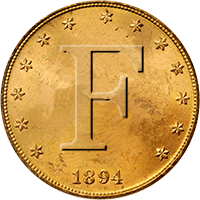How many of you guys hunt with the digital screen and find lots of indians? On the smartfind screen I just dig any signal when the cursor is at or near the top of the screen(indians almost always have a little space between the cursor and the top). If the cursor is way to the left or in the middle or way to the right I will dig it and find coins in all of these situations. So I'm guessing that would mean that even though an indian cent ideally reads about 7--25, it COULD be 15--25 or 25--25 or even 30--25 or 3--25 or even 00--25.
The point I'm making is the conductive number is pretty dependable with only a small variance but the ferrous number can be all over. If your iron mask is rejecting 30--25 you could miss a few, if your iron mask is rejecting 25--25 you could miss an awful lot.
This of course is true with silver and other coins too. I just brought up the indians because of recent posts. Conductive numbers are pretty dependable on the Explorer, ferrous numbers aren't, maybe this is why they didn't even put the ferrous numbers on the XS and S models.
Neal
The point I'm making is the conductive number is pretty dependable with only a small variance but the ferrous number can be all over. If your iron mask is rejecting 30--25 you could miss a few, if your iron mask is rejecting 25--25 you could miss an awful lot.
This of course is true with silver and other coins too. I just brought up the indians because of recent posts. Conductive numbers are pretty dependable on the Explorer, ferrous numbers aren't, maybe this is why they didn't even put the ferrous numbers on the XS and S models.
Neal


